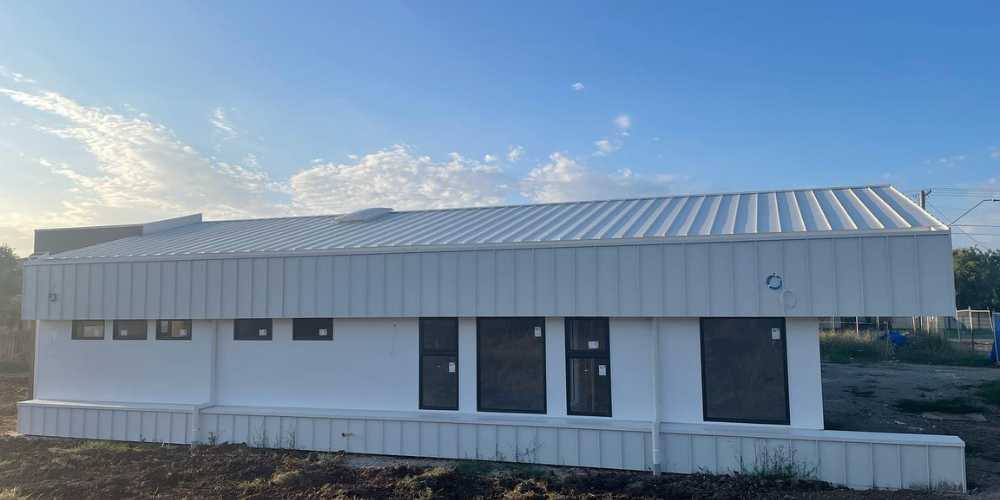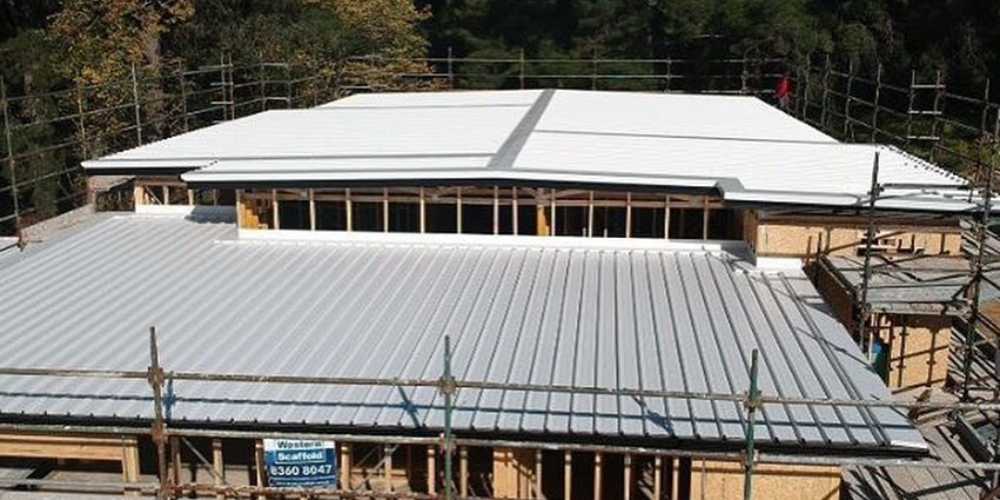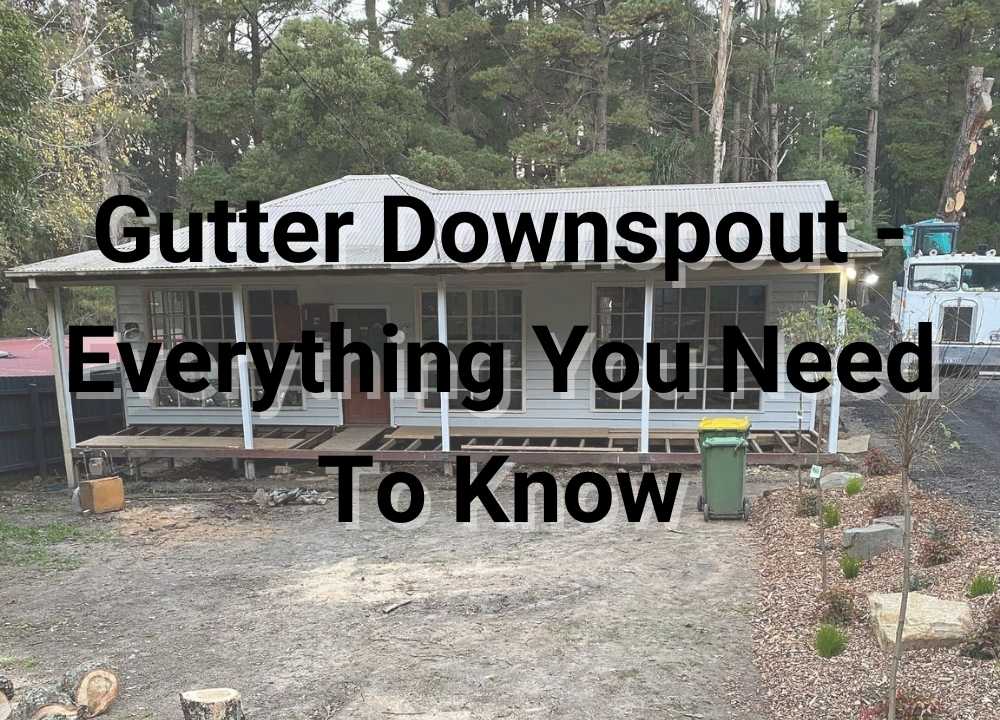Gutter Downspout - Everything You Need To Know
When rain, snow, and ice on your roof melt, gutters channel water away from your property. Installed around the edges of your roof, these systems—often constructed of aluminium but may also be vinyl, steel, or copper—allow water to flow towards the ground so that it doesn’t harm the roofing and siding of your house or even enable water to seep inside, which might cause a deluge of damage, costly repairs, and problems. Gutter downspouts greatly enhance your gutters’ ability to function effectively.
Knowing that your home is well-protected from the weather makes it much simpler to enjoy a rainy day from the comfort of your couch. You’ll have a piece of mind if you know what a downspout is and how it works with your gutter system. You’ll also have the equipment and knowledge you need to keep everything in functioning condition.
Read on to discover more about downspouts, including how they function and how to care for them to prolong their useful life.

Lance Mathews
In This Article

What are Downspouts?
The tube that joins the gutter at the roof’s edge and extends down the side of your house is known as a gutter downspout. This allows water to drain effectively from your home, dramatically reducing the risk of structural damage. If there were no downspouts, water from heavy rains, melting snow, and ice would build up close to the house’s foundation, causing floods (and severe harm to your basement, if you have one).
How Do Downspout and Gutter Works Together?
At best, it might be challenging for the homeowner to decide what to place in their gutter system. Since you want your gutters to stay out, a downspout is vital. But where should you put it? Where ought the water to flow? Which size ought to be applied? Fortunately, it’s simple to understand if you know the fundamentals.
The gutter and downspout are connected just above the fascia board—the wood between the roof’s bottom and the top of the gutters. Your house’s fascia board will sustain water damage first if there is no downspout.
Although the downspout is bent at the top and bottom to capture better and discharge water, more is needed to prevent water from pooling at the base of your property. To ensure that extra water is channelled away from your property, you should build a downspout extension pipe or bury your downspout underground, depending on the surrounding topography.
Possible Concerns With Having Downspouts
Sticks may get into downspouts, jam them up, and cause damming, which stops water from getting into the gutters. Even dead birds and bird nests can jam drains (more common than you might think).
Additionally, downspouts can separate from the gutter portion if they are damaged by obstructions or are struck by branches or ice. This is quite obvious, especially when it rains.
Ineffective gutter downspouts can result from erosion mosquitoes (when water gathers up) (where water builds up), outside leaks, and unpleasant sidewalk appeal.
In either case, these problems frequently occur if adequately maintained and examined periodically. There are always uncomplicated fixes if there are problems with the gutters or downspouts.
Importance of Downspouts
Its home’s principal mechanism for collecting rainwater is your gutters. These narrow, hollow metal half-pipes keep rainfall from clogging up your roof and leaking into your walls, despite their limited width and length. But when your gutters have gathered water close to your roof, where does it go? Here is why having functional drains is essential.
Remove Water From The Foundation
Downspouts move water away from your home’s foundation and into the ground. Suppose you let the water pool where your house meets the ground. In that case, it will seep into the wood and concrete foundation, causing unwelcome moisture to deteriorate the building. There might be problems with the structure and safety of your property if enough water accumulates there.
Avoid Unattractive Yard Erosion
In addition to protecting the structural integrity of your house, your water drainage system also avoids unattractive yard erosion. You can have naturally occurring pockets and indentations that collect water depending on the slope of your property and the landscaping in your yard. Your downspouts must divert excess water from these spots so that it doesn’t pool there, damage the vegetation, and erode the soil beneath.
Enhancing the Appearance of Your Home
The positioning of your home’s downspouts and the installation of accessories both contribute to its resale value. Your home’s aesthetic may need to be correctly installed with downspouts or accessories in strategic locations. This will upset you and may lower your house’s value.
You may avoid placing downspouts in the wrong place and later regretting it by consulting an expert on where they should be placed.
It Avoids Wet, Flooded Basements
You could have a concrete basement floor, depending on the design and location of your property. Your basement walls, windows, and doors do not share this surface’s density and relative nonporousness. If your basement entrance points are not properly draining, water will accumulate until flooding occurs.
How To Maintain Your Gutter Downspouts
To keep them operating correctly, gutters and downspouts should be cleaned frequently—typically, at least once a year. It would be best to keep gutter downspouts clean by ensuring that no leaves or debris get stuck inside and clog the system. If water does not flow as swiftly as it usually does when you run the spout, there may be an obstruction inside. Put the hose inside the downspout from the bottom and increase the water pressure to its maximum setting to force anything stuck inside out. If this is unsuccessful, you may try using a plumber’s snake to clear the obstruction and flush water through the downspout to flush the debris out.
Invest in a reliable gutter protection system or gutter coverings to extend the time between cleanings while preventing blockage. These keep junk out while allowing water to flow easily into the gutters and downspouts. When the wind blows or rains, the debris on your roof will safely fall to the ground.

Frequently Asked Questions
For rainfall or snowmelt to flow “downhill” via the gutters and into the downspouts, gutter systems have a modest downward slope towards the corners of the house. The pipe that runs vertically down the side of a house is called a downspout. It is joined to a hole in the gutter channel at the top.
Ensure your downspouts are positioned so water won’t accumulate close to your outside wall and foundation. For instance, keep them away from locations where the pathways and paving stones aren’t properly pitched away from the external wall.
Every roofline should have a gutter trough fitted with a downspout to remove any water that collects. An upper roof’s downspout should empty into a lower gutter. Never allow it to flow straight onto the roof, as this may hasten the degradation of the roof deck and shingles.
Generally, your property will require one downspout for every 40 feet of gutter. Your gutters’ size will determine how oversized your downspouts will be. The 5 to 8-inch gutter diameters are the most popular. Keep to 2-by-3-inch and 4-by-5-inch downspouts for small and big gutters, respectively.
Key Takeaways
Downspouts are a crucial component of your home’s defence against water damage. A home without gutters and downspouts is far more prone to corrosion and moisture damage than residences with such a drainage system.
Rain, snow, or condensation-related water buildup on your home’s roof causes it to slope into a gutter system, where it is collected and kept from flowing down the side of your house and soaking residents and onlookers. Additionally, water would pool at the base of your house without gutters, increasing the risk of damage to your basement, your home’s façade, and its foundation.

